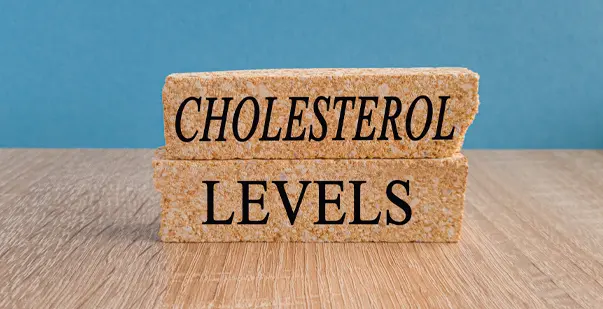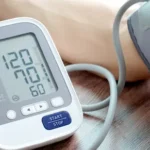Table of Contents:
- Introduction
- What is Cholesterol?
- Why Is Cholesterol Needed For The Body
- What Causes High Cholesterol?
- Symptoms of High Cholesterol
- Types of Cholesterol Problems
- How to Lower Cholesterol
- Final Thoughts
Cholesterol is a term frequently mentioned in discussions about health, and people mostly emphasize its negative effects. According to the Centers for Disease Control and Prevention (CDC), nearly 86 million U.S. adults have total cholesterol levels higher than 200 mg/dL, placing them at an increased risk for heart disease.
High cholesterol levels may result in cardiovascular complications such as heart attacks and strokes. However, people ignore cholesterol’s positive aspects, as it is needed in the body for various functions, like vitamin D synthesis and hormone production. Thus, to maintain overall health, you need to manage cholesterol levels.
In this guide, we’ll break down what cholesterol is and the problems it causes when it gets out of control. Whether you want to understand your latest blood test results or just want to take better care of your heart, this guide has all the answers you need.
What is Cholesterol?
A waxy, fat-like substance that’s found in every cell of your body is called cholesterol. The body produces cholesterol naturally, but it is also found in animal-based foods like meat, eggs, and dairy products. While cholesterol is necessary for good health, high concentrations can lead to health problems. There are two main types of cholesterol:
- Good Cholesterol (HDL):
High-density lipoprotein, or HDL, is often called “good” cholesterol. It helps remove extra cholesterol from the heart and brings it back to the liver. The liver processes it and flushes it out from the body. HDL functions as a vital mechanism for maintaining balanced cholesterol levels in the bloodstream.
- Bad Cholesterol (LDL):
Low-density lipoprotein, or LDL, is often called “bad” cholesterol. Too much LDL builds up in the walls of your blood vessels, causing them to narrow and harden. This process, known as atherosclerosis, increases the risk of heart disease and other serious health conditions. LDL can be thought of as a substance that obstructs and damages your arteries.
Balancing these levels is key to maintaining heart health and preventing cardiovascular diseases.
Why Is Cholesterol Needed For The Body
Once you understand what cholesterol is, you must be wondering what its significance is in the human body. Cholesterol is the main sterol found in all higher animals, present in body tissues, particularly in the brain and spinal cord, as well as in animal fats and oils. Cholesterol is crucial for many vital functions in your body. Some of the prime reasons are:
- Hormone Production: Cholesterol is necessary for making hormones, which are chemical messengers that control many functions in your body, like growth and stress response.
- Vitamin D Production: Cholesterol helps your body produce vitamin D when your skin is exposed to sunlight. Vitamin D is essential for strong bones and a healthy immune system.
- Digestion: Your liver uses cholesterol to make bile, which helps your body digest and absorb fats from the food you eat.
- Cell Structure: Cholesterol is a key building block of your cell membranes, helping them stay strong and flexible.
- Nervous System: Cholesterol is important for making myelin, a substance that covers and protects nerves and allows them to send signals throughout the body.
While we often hear about the dangers of high cholesterol, it’s important to remember that your body needs cholesterol to stay healthy. The key is to keep your cholesterol levels balanced—having the right amount helps your body function at its best.
What Causes High Cholesterol?
A study revealed that high cholesterol was responsible for 4.4 million deaths in the United States. High cholesterol means there’s too much cholesterol in your blood, which increases your risk of heart disease and stroke. However, what are the causes of cholesterol? Let’s break it down in simple terms.
- Unhealthy Diet:
One of the major causes of high cholesterol is eating foods that are high in unhealthy fats. Two main types of fats can raise your cholesterol levels:
- Saturated Fats: These are found in foods like red meat, butter, cheese, and other dairy products made from whole milk. Eating too much of these foods can raise your LDL (bad) cholesterol.
- Trans Fats: These are found in fried foods, baked goods like cookies and cakes, and many processed snacks. Trans fats are even worse than saturated fats because they not only raise LDL cholesterol but also lower HDL (good) cholesterol.
- Lack of Exercise:
When you don’t get enough physical activity, your body doesn’t use up the extra calories you get from food. Weight gain and higher cholesterol levels can be a result of this. Exercise helps raise your HDL (good) cholesterol and lower your LDL (bad) cholesterol. This is the natural way to keep your cholesterol balanced.
- Being Overweight:
Carrying extra weight, especially around your torso, can increase your cholesterol levels. Being overweight often goes hand in hand with eating too much unhealthy food and not getting enough exercise. Losing even small amounts of weight can lower cholesterol levels.
- Smoking:
Smoking is bad for many reasons, and one of them is that it can lower your HDL (good) cholesterol. It also damages the walls of your blood vessels, making it easier for cholesterol to build up and cause blockages. Quitting smoking can improve your cholesterol levels and protect your heart.
- Family History:
Sometimes, high cholesterol runs in families. If your parents or grandparents had high cholesterol, you might have it too, even if you eat healthily and exercise. Genetics can influence how your body processes cholesterol.
- Age and Gender:
As you get older, your cholesterol levels tend to rise. Women usually have lower cholesterol levels than men before menopause, but after menopause, women’s LDL (bad) cholesterol levels often go up.
- Other Health Conditions:
Certain health problems, like diabetes, can also cause high cholesterol. When your body doesn’t handle sugar properly, it can lead to higher levels of LDL (bad) cholesterol.
Hence, we can say that causes of cholesterol are a combination of diet, lifestyle, genetics, and other health conditions. The good news is that many of these factors can be managed with healthy habits like eating better, exercising, and quitting smoking.
Symptoms of High Cholesterol
High cholesterol is tricky because it doesn’t usually cause any symptoms. That means you can have high cholesterol and not even know it. This is why it’s often called a “silent” problem. The only way you can check if you have high cholesterol is by doing a blood test. However, if high cholesterol isn’t treated, it can lead to serious health issues, and those can have symptoms.
What Can Happen If High Cholesterol is Left Untreated
Even though high cholesterol doesn’t have symptoms, it can lead to serious health problems if not managed. Here are some of the conditions that can result from untreated high cholesterol:
- Heart Disease:
Over time, high cholesterol can cause plaque to build up in your arteries. Plaque is a mix of fat, cholesterol, and other substances. As plaque builds up, it makes it harder for blood to flow through your arteries. This can lead to chest pain (called angina) or even a heart attack if the blood flow to your heart is blocked. Despite the lack of cholesterol symptoms, this condition can be life-threatening.
- Stroke:
If plaque builds up in the arteries that supply blood to your brain, it can cause a stroke. A stroke happens when part of your brain doesn’t get enough blood, leading to brain damage. Symptoms of a stroke can include sudden numbness or weakness, especially on one side of the body, confusion, trouble speaking, or difficulty seeing.
- Peripheral Artery Disease (PAD):
High cholesterol can also affect the arteries in your arms and legs. Peripheral artery disease is caused when these arteries become narrow or blocked. PAD can cause pain in your legs when you walk, numbness, or a feeling of weakness.
- Xanthomas:
In some rare cases, very high cholesterol levels can cause fatty deposits to form under the skin. These are called xanthomas, and they appear as yellowish bumps, often around the eyes, elbows, or knees.
Types of Cholesterol Problems
Cholesterol is a vital substance for various bodily functions. However, imbalances in cholesterol levels, particularly an excess of certain types, can lead to significant health concerns. There are different types of cholesterol-related health issues you should know about:
- High Cholesterol (Hypercholesterolemia):
This is when there’s too much cholesterol in your blood, especially LDL (Low-Density Lipoprotein). High cholesterol doesn’t cause symptoms, but it can lead to serious problems like heart disease or stroke. It happens when you eat too many unhealthy foods, don’t exercise enough, or if it runs in your family.
- Low HDL Cholesterol:
If your HDL cholesterol is too low, your body can’t get rid of enough bad cholesterol. This can increase your risk of heart disease. A healthy lifestyle, including exercise and a good diet, can help raise your HDL levels.
- High Triglycerides:
Triglycerides, a type of fat in your blood, are created when your body converts extra calories from food and stores them in fat cells. Having high triglycerides, along with high LDL or low HDL cholesterol, can raise your risk of heart disease. Eating too much sugar, drinking alcohol, or being overweight can lead to high triglycerides.
- Familial Hypercholesterolemia:
This is a genetic condition that causes very high cholesterol levels, even in young people. It’s passed down from parents to children and can lead to early heart disease if not treated. People with this condition often need special medications to control their cholesterol.
Final Thoughts
Cholesterol might seem like a complex topic, but it’s all about balance. Your body needs cholesterol for vital functions like building cells, producing hormones, and creating vitamin D. However, too much of the wrong kind, especially LDL or «bad» cholesterol, can lead to serious health problems like heart disease and stroke. By adopting a healthier diet, exercising regularly, and monitoring your cholesterol levels, you can take control of your heart health.
In addition to these lifestyle changes, learning CPR is a vital skill that can save lives, especially for individuals at risk due to high cholesterol. CPR keeps blood flowing during emergencies, providing critical support until professional help arrives. Don’t wait until it’s too late—take charge of your health by managing cholesterol and learning CPR/First Aid today.
Read More:
Outdoor medical emergencies: why do outdoor enthusiasts need life-saving courses?





